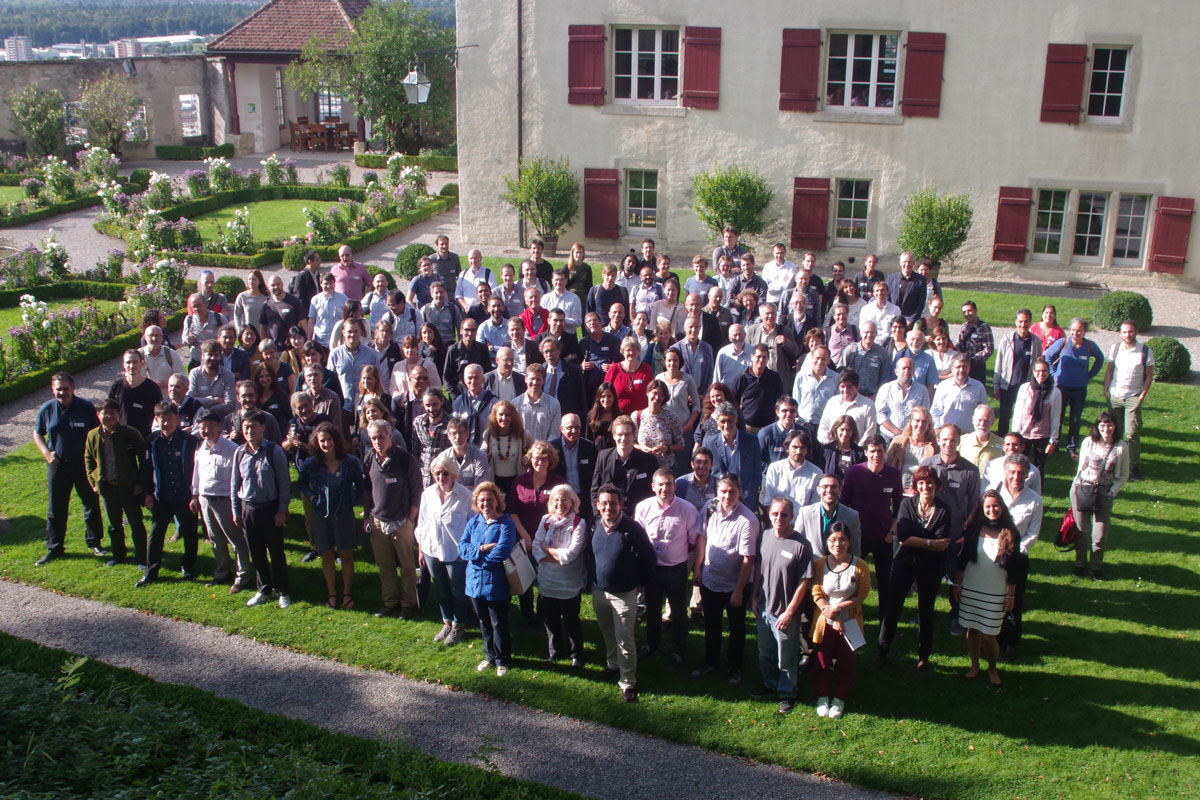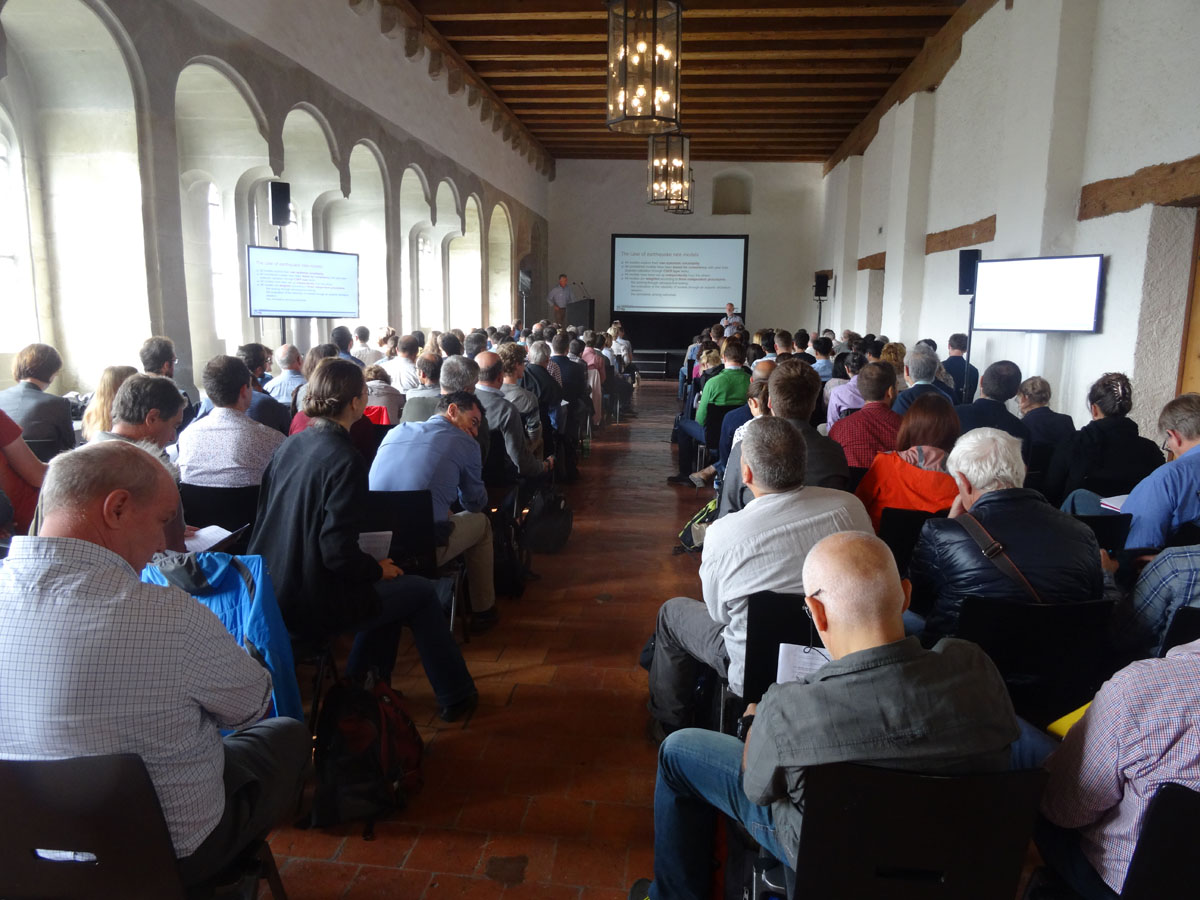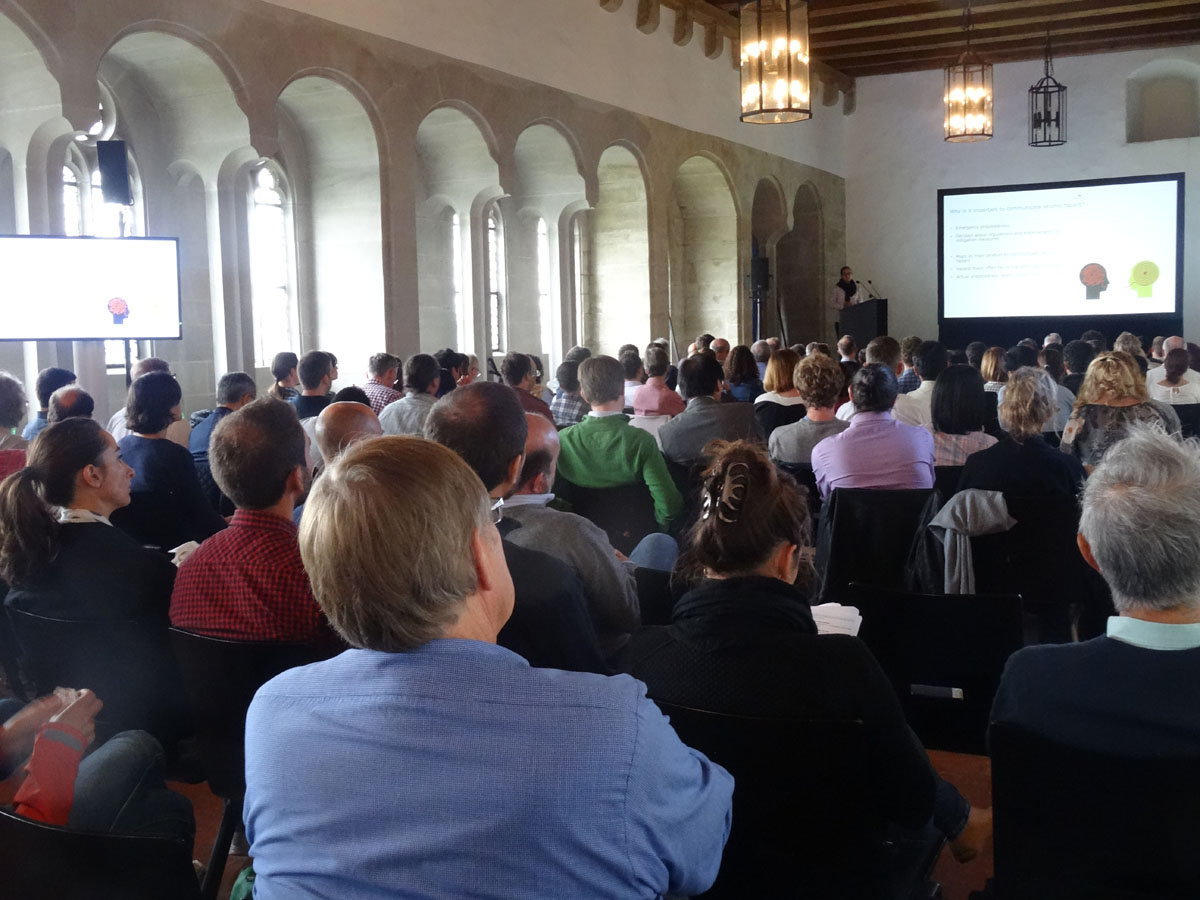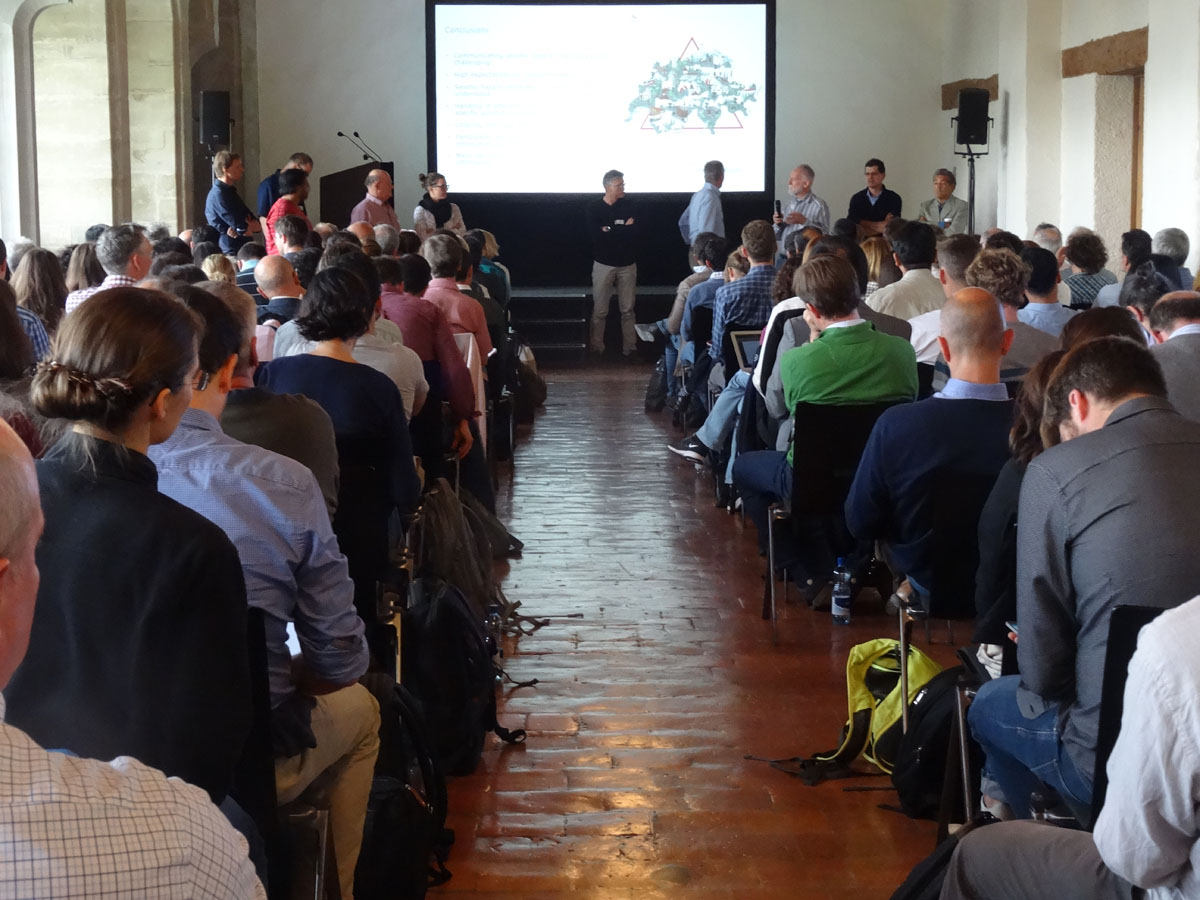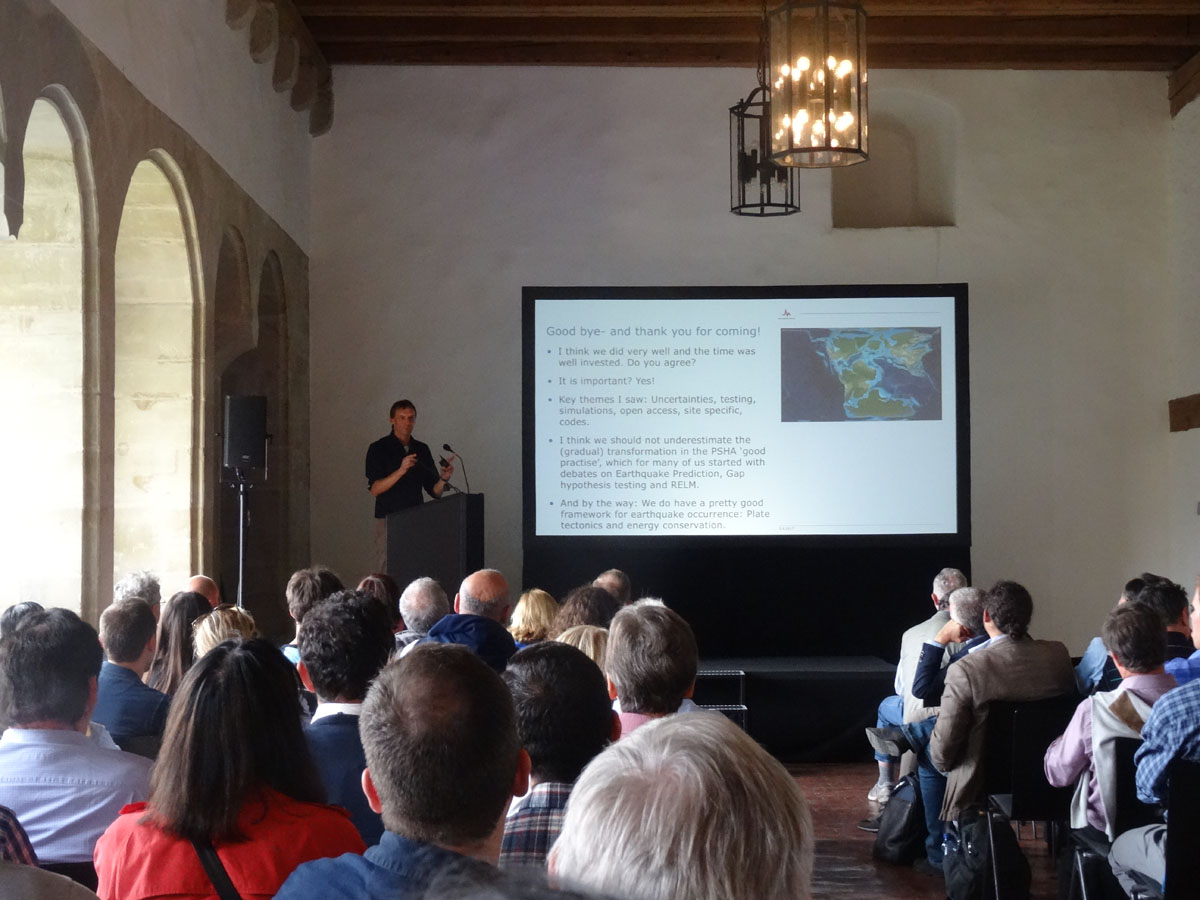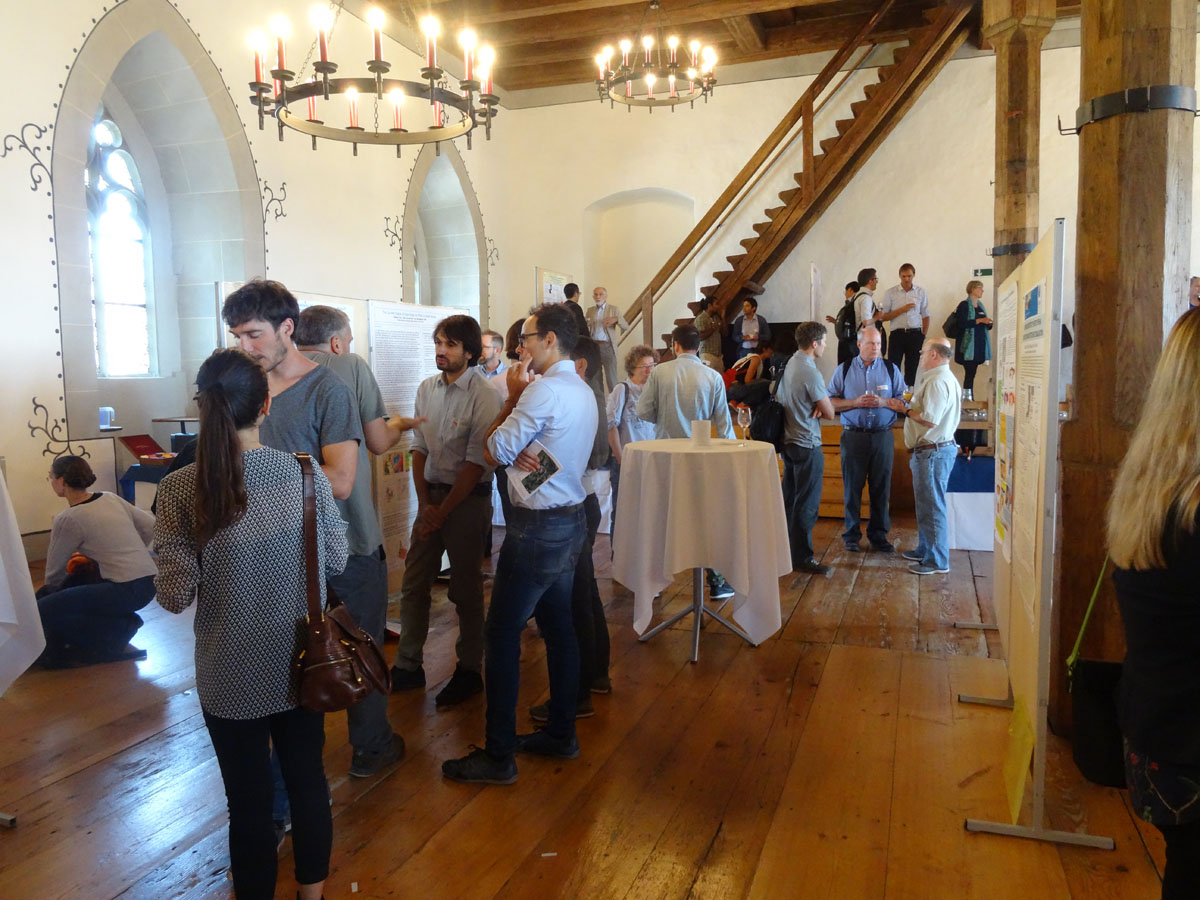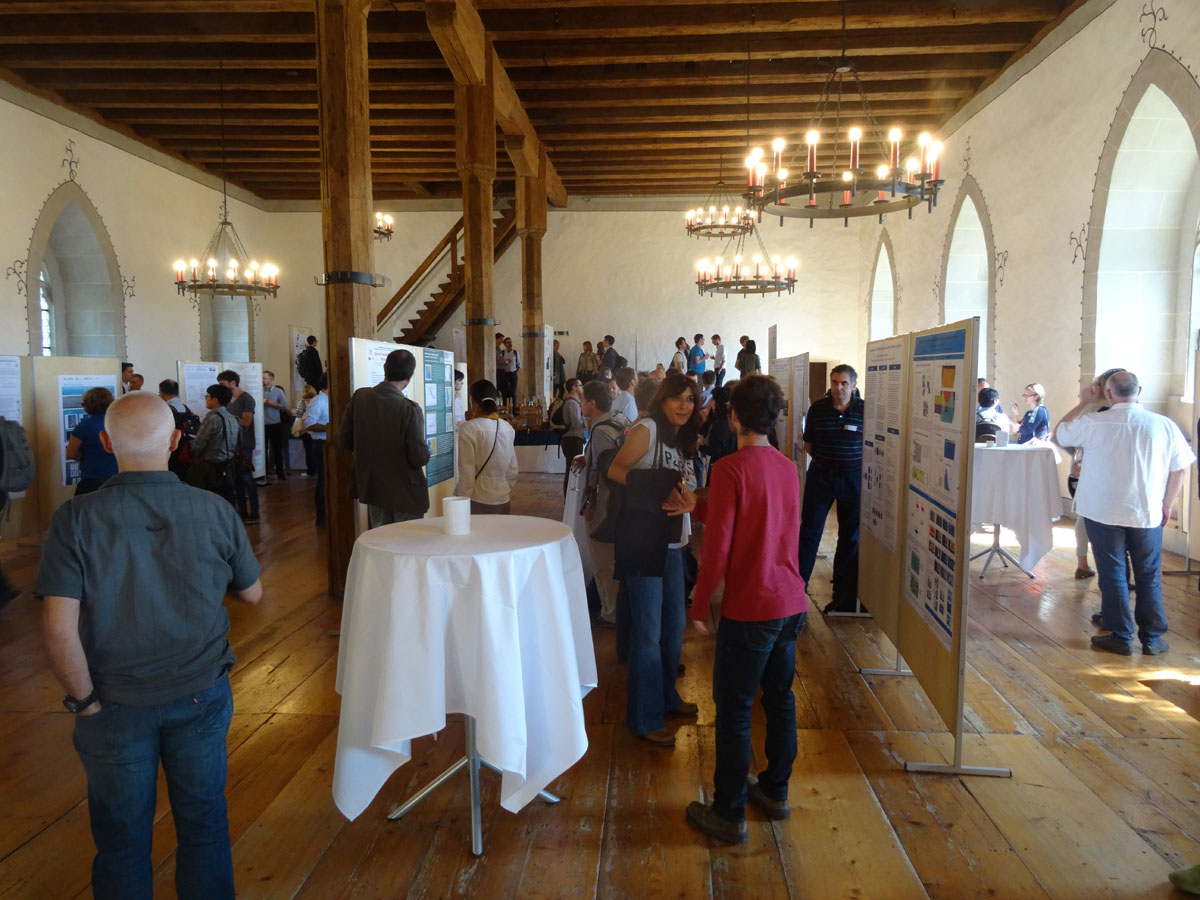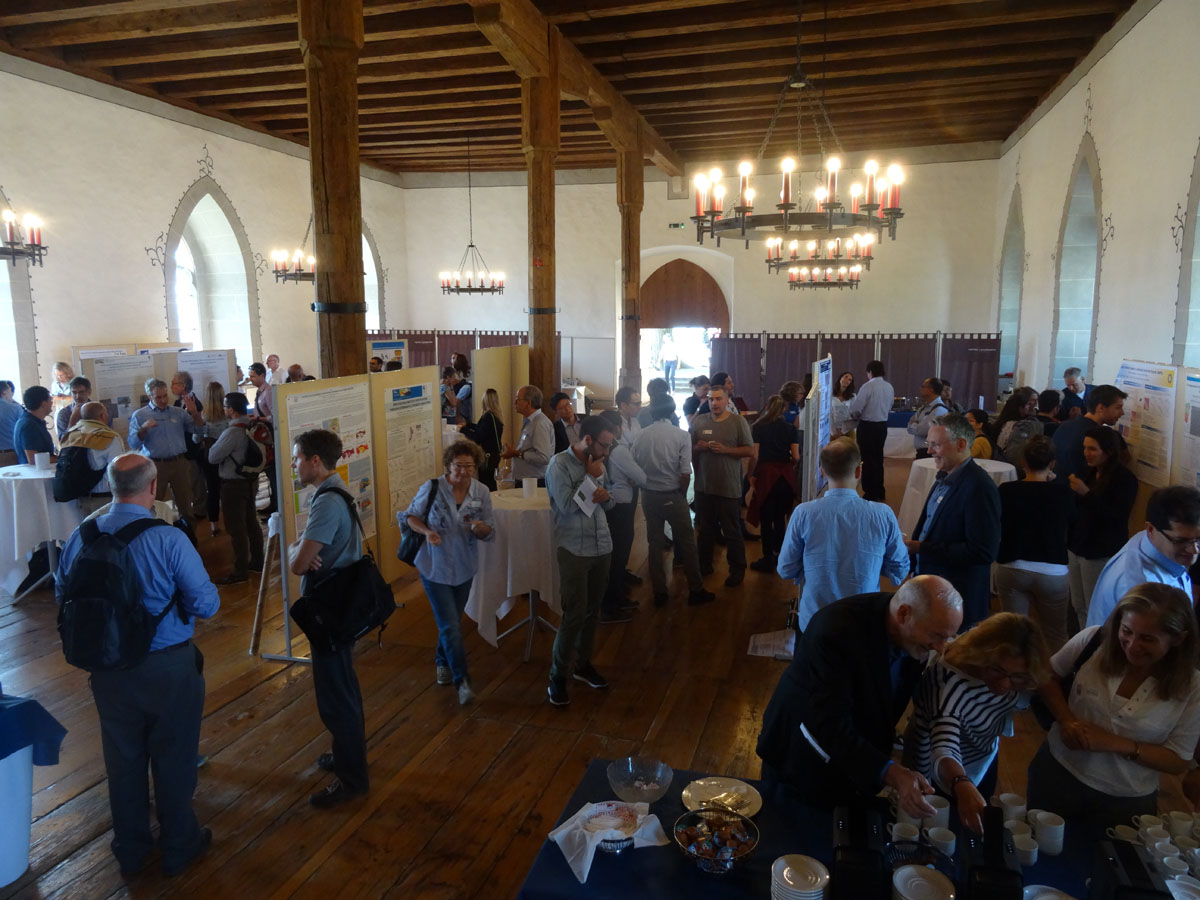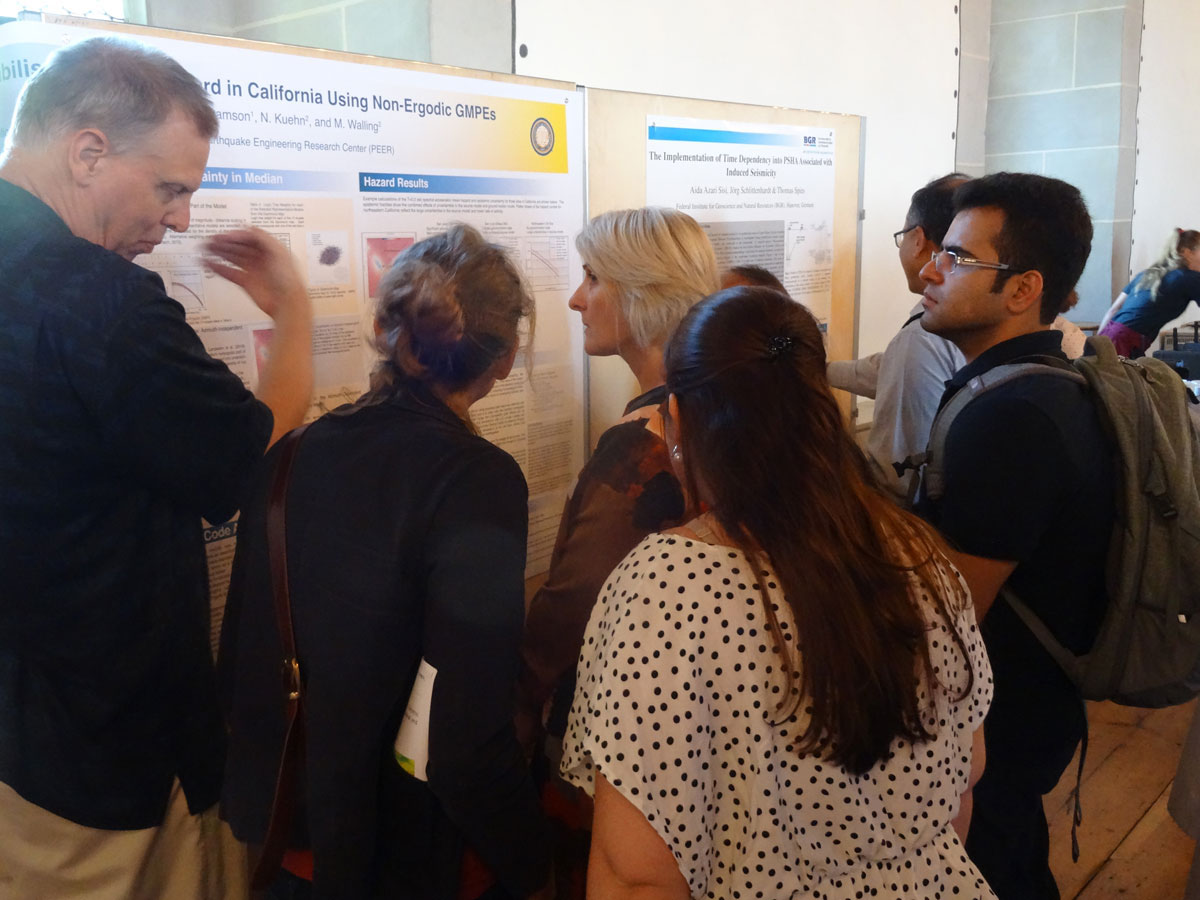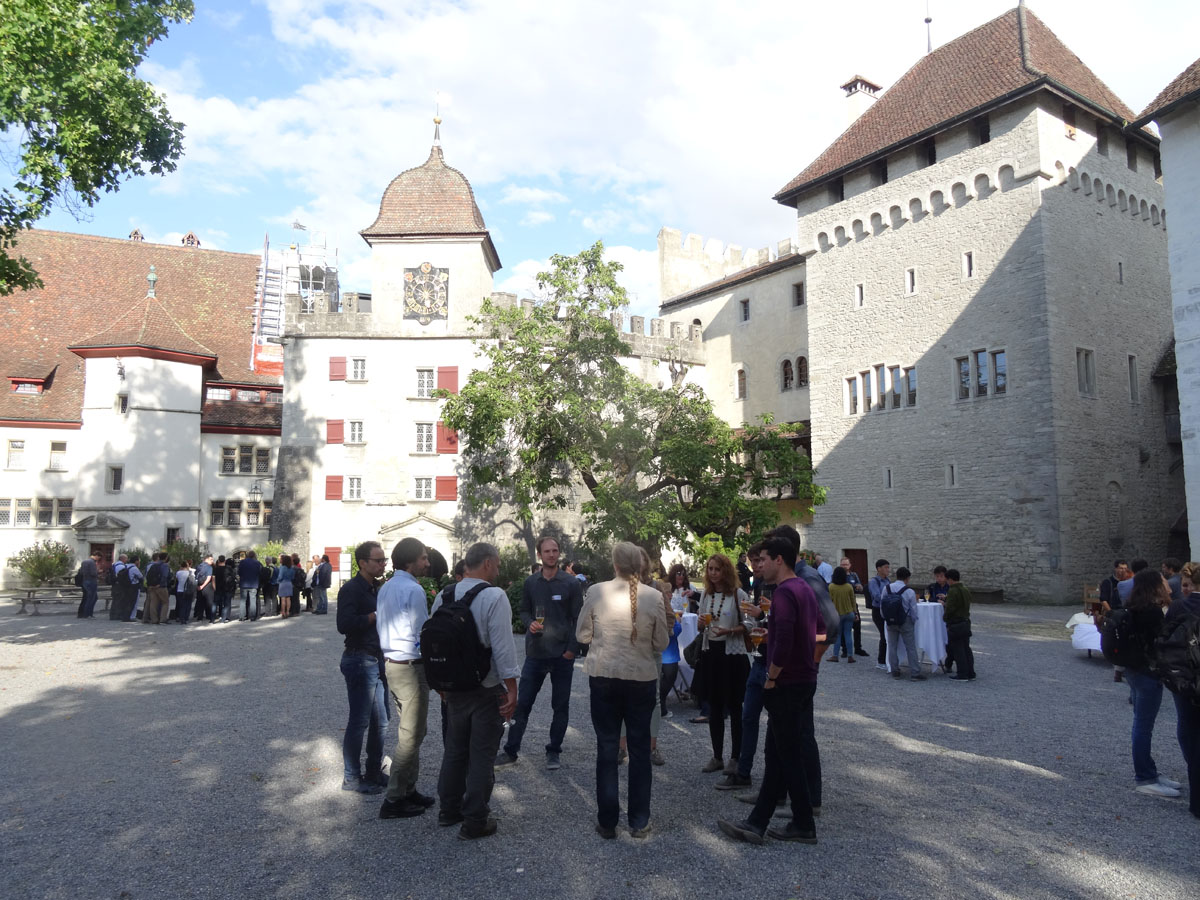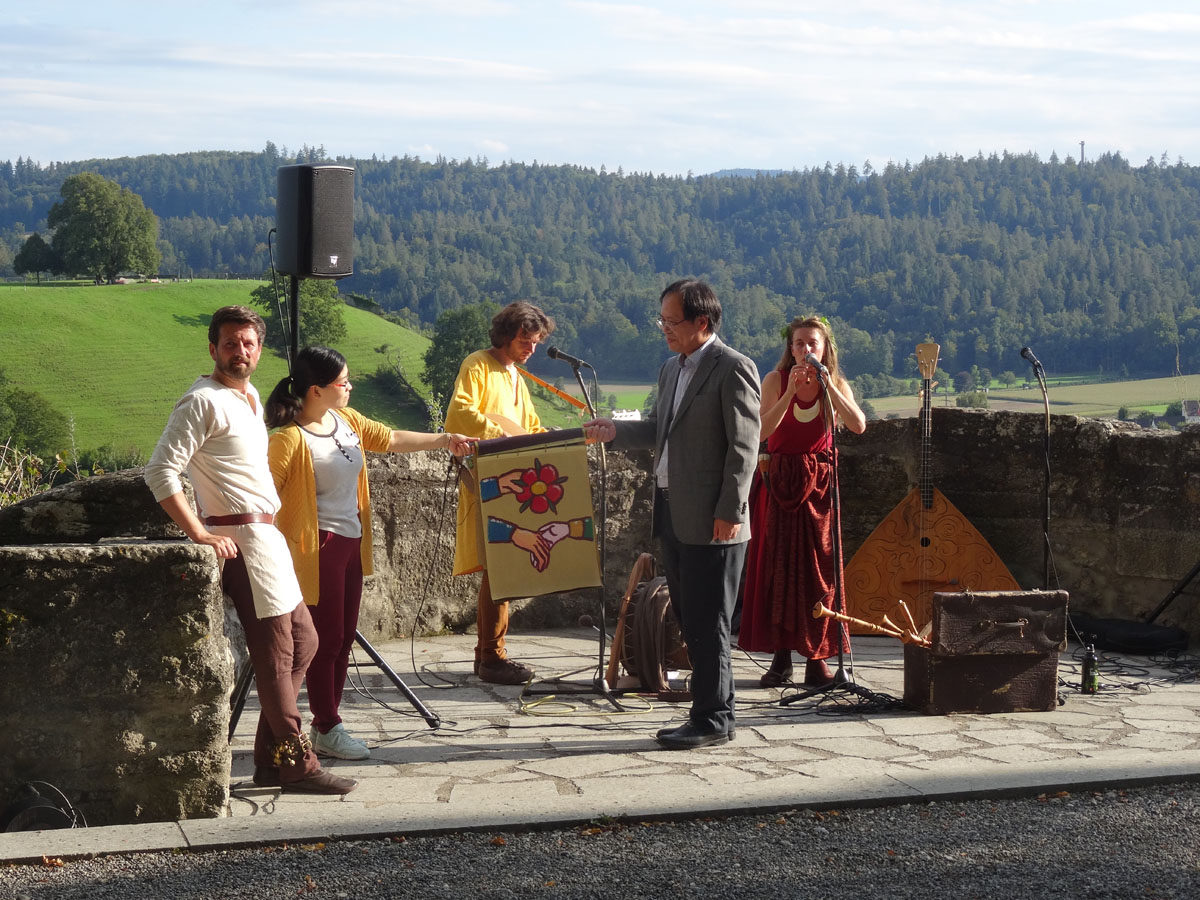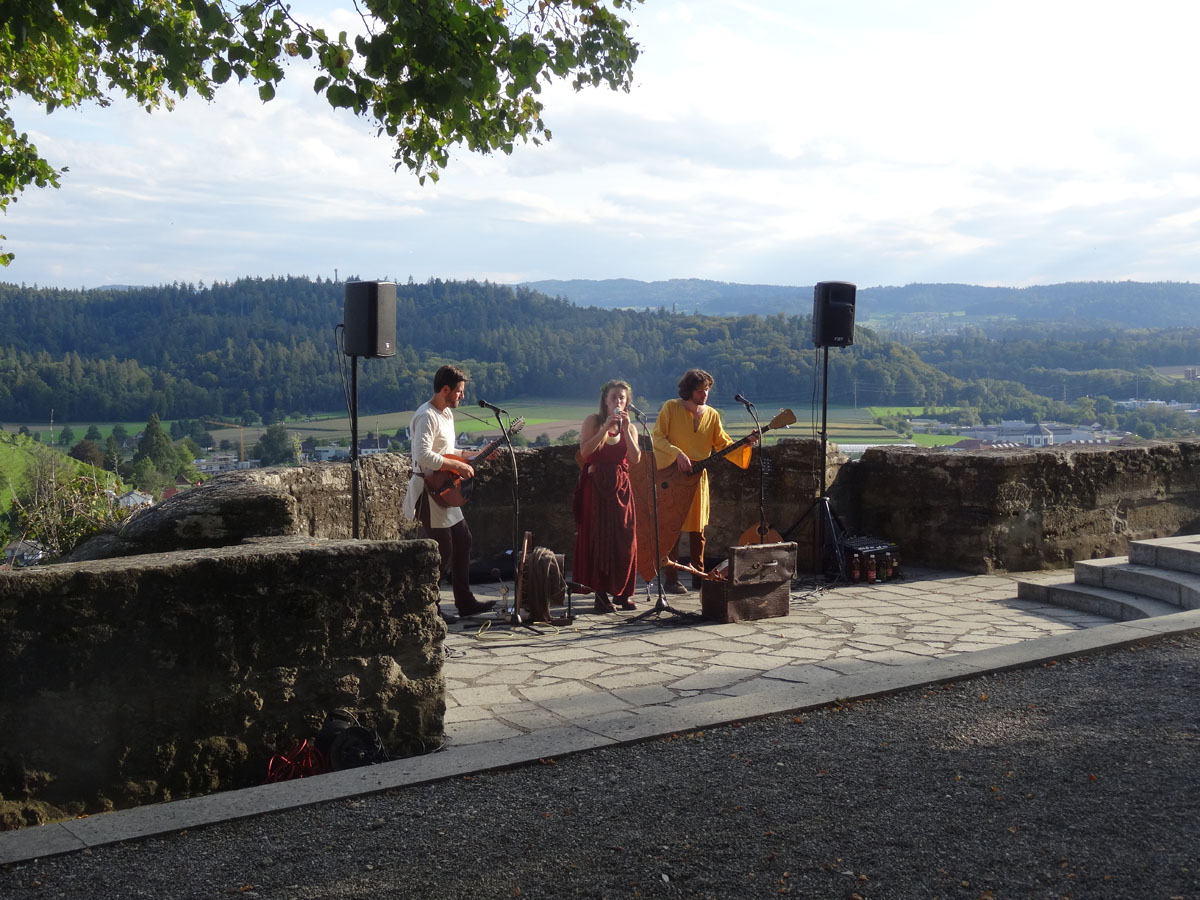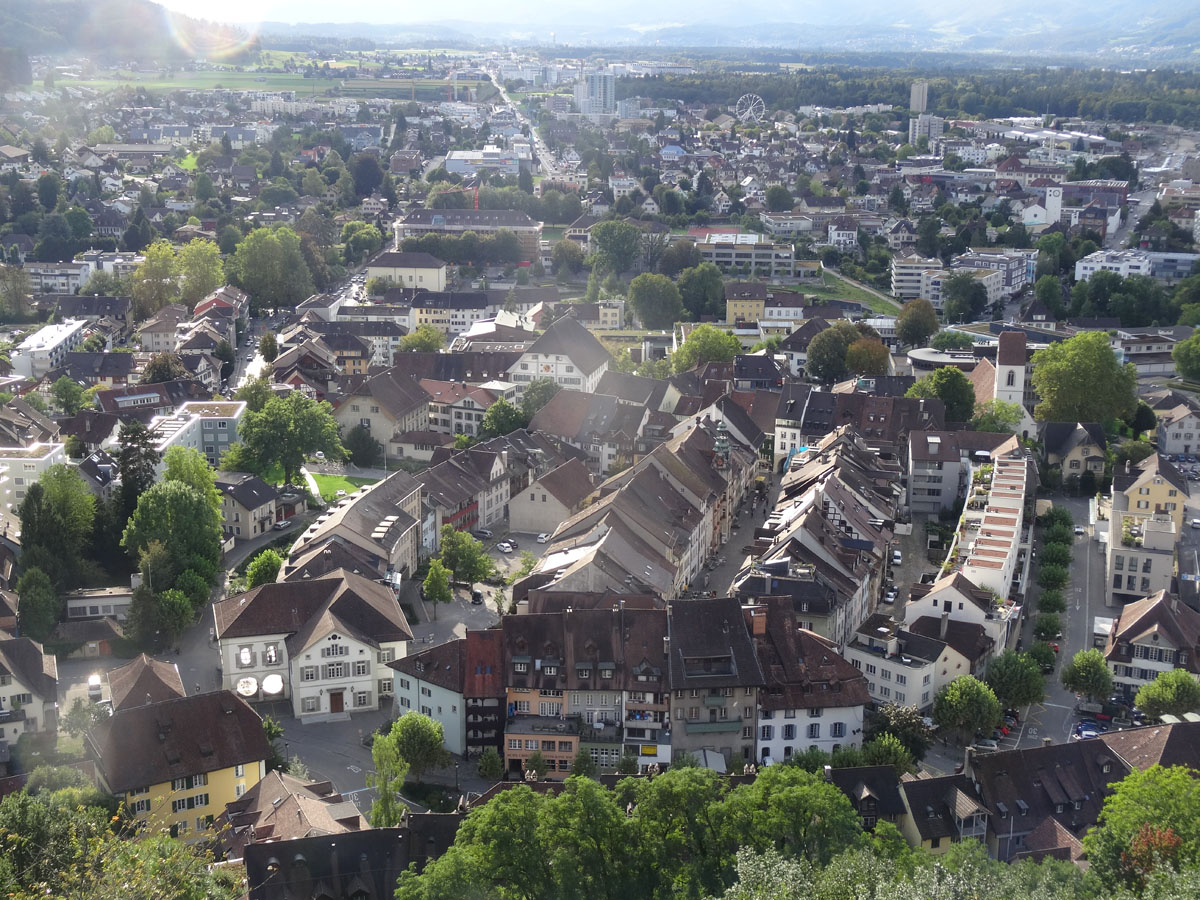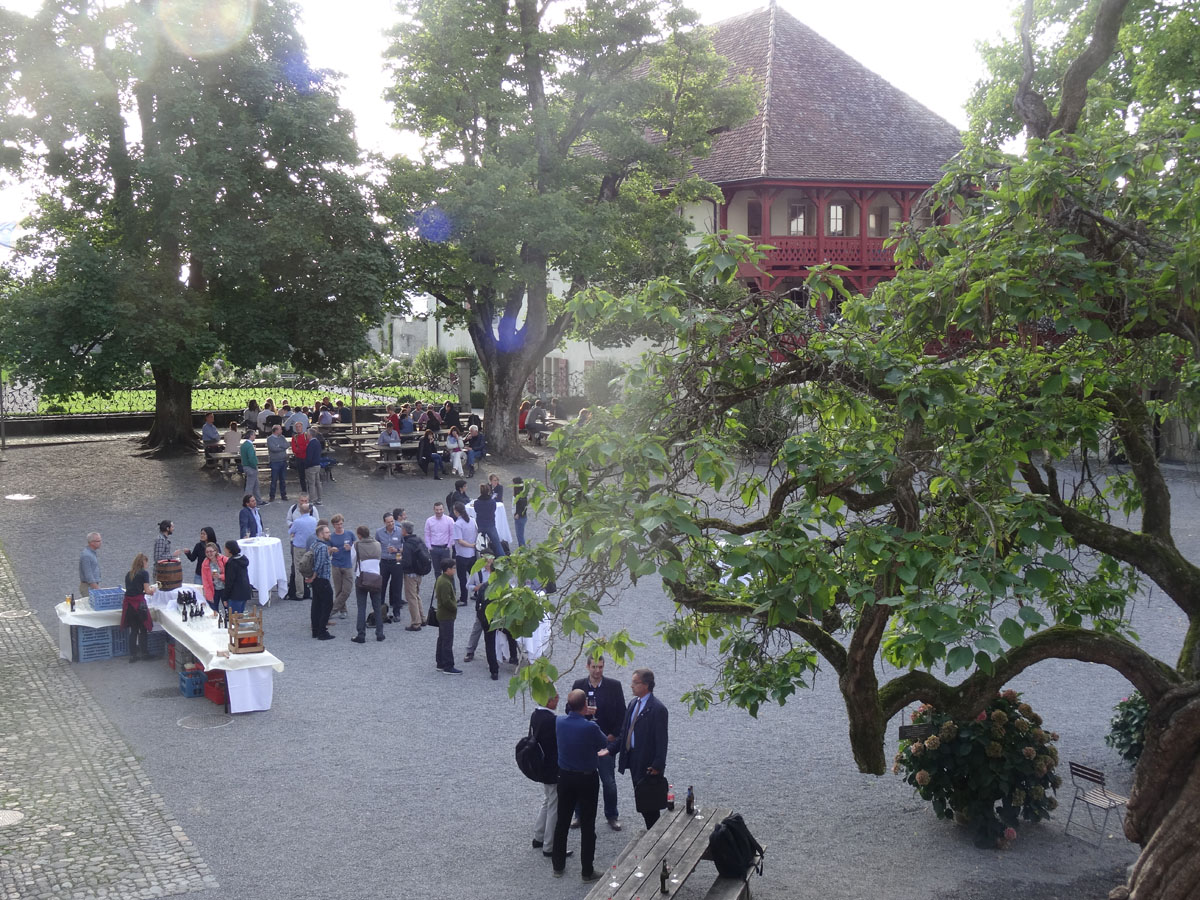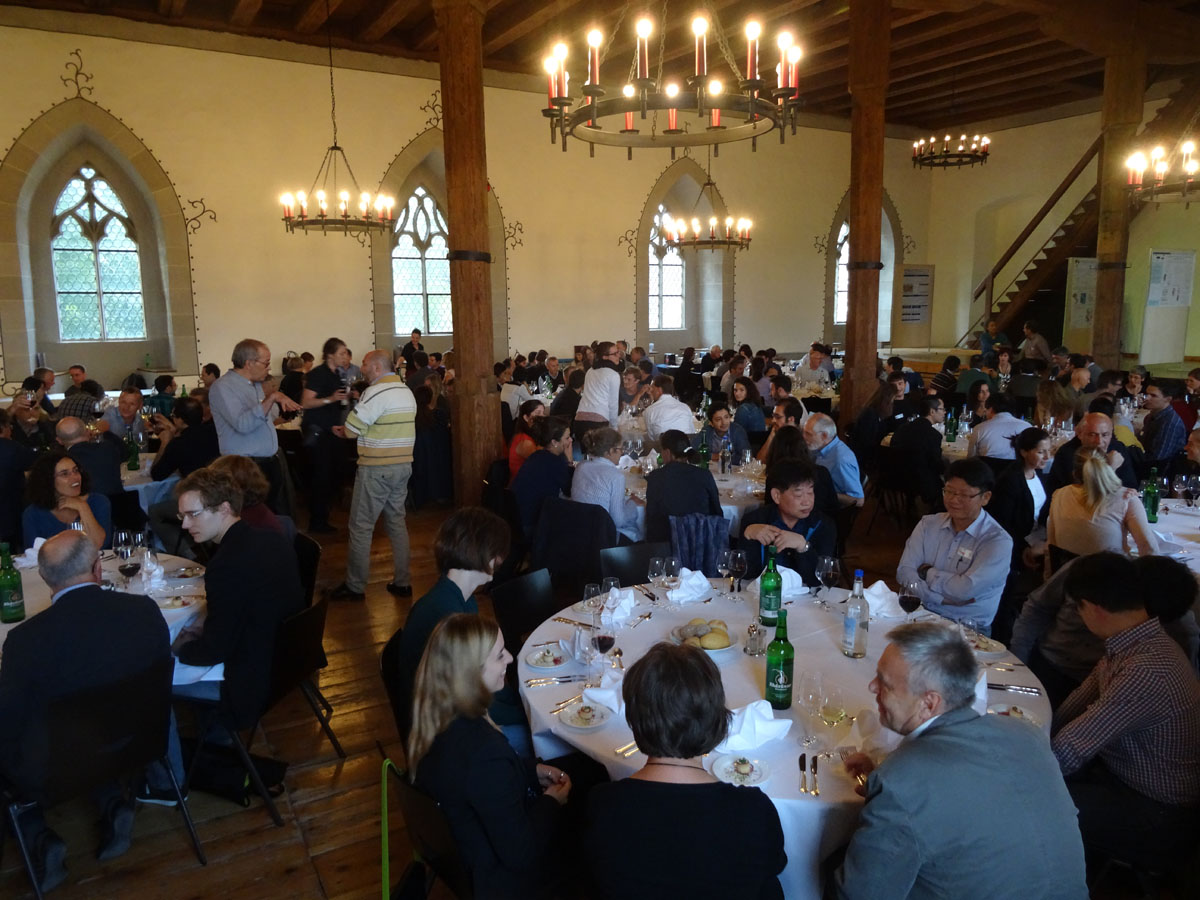PSHA Workshop
Future directions for probabilistic seismic hazard assessment at a local, national and transnational scale
5 to 7 September 2017 in Lenzburg, Switzerland

Objectives
This scientific workshop brings together more than 150 leading experts on Probabilistic Seismic Hazard Assessment (PSHA) from around the globe to discuss the current state of practice as well as future directions. The workshop will adopt a holistic point of view (i.e. interdisciplinary, multiple spatial- and temporal scales), critically reflecting all elements of modern PSHA.
Distinguished keynote speakers will introduce a range of topics, but we also call for solicited contributions (oral and poster). We will allocate sufficient time for discussions and networking, and the beautiful castle in Lenzburg offers a unique setting.
Revisiting past and ongoing site-specific projects on local, national or transnational scales, we strive to draw conclusions for future PSHA projects. We will also reflect on emerging challenges, such as time-dependence, earthquake interactions, anthropogenic seismicity, model validation, simulation based PSHA, communication of hazard results and procedural requirements for ensuring robustness, especially in the context of PSHA for critical facilities. On day three, we will focus specifically on the needs of community and harmonization projects, such as the next-generation European PSHA.
Alphabetical order by authors. All rights remain with the authors.
Norm Abrahamson
Treatment of Epistemic Uncertainty in PSHA Results (PDF)
John Adams
Pragmatic Choices (and Wrinkles) for Implementing PSHA into National Building Code for Canada (PDF)
Trevor Allen
Recoulouring GSHAP: Challenging the Status Quo of Australian Earthquake Hazard (PDF)
Fabrice Cotton
Increasing Testability – Expanding Possibilities: Some ideas on CSEP Future Developments (PDF)
Luis Dalguer
The Role of Physics-Based Ground Motion Models in Non-Ergodic Site-Specific PSHA Studies (PDF)
Donat Fäh
Considerations About (In)Correct Treatment of Site-Effects in Seismic Hazard Assessment (PDF)
Ned Field
An Overview of the 3rd Uniform California Earthquake Rupture Forecast (UCERF3) (PDF)
Matt Gerstenberger
Time-Dependent Hazard in New Zealand and Uncertainty in Seismic Source Models (PDF pending)
Domenico Giardini
The GSHAP Legacy and Lessons from SHARE and EMME: Learning from Regional and Global PSHA (PDF)
Florian Haslinger
EPOS, EFEHR and the Value of Hazard and Risk Service for the Community (PDF)
Iunio Iervolino
Aftershocks’ Effect on the Assessment of Design Seismic Actions in Italy (PDF)
David Jackson
Resistance to Rupture (PDF pending)
Thomas Jordan
CyberShake Models of Seismic Hazards in Southern California (PDF pending)
Sreeram Reddy Kotha
Site Classification from Spectral Clustering of Empirical Site Amplification Functions (PDF)
Dirk Kraaijpoel
Development of a seismic risk model chain framework for Groningen induced seismicity (PDF pending)
Martin Mai
Rupture Dynamics and Seismic Radiation on Rough Faults for Simulation-Based PSHA (PDF)
Michèle Marti
Communicating Seismic Hazard (PDF)
Warner Marzocchi
A Unified Probabilistic Framework for Testing Seismic Hazard Analysis (PDF)
Catarina Matos
Small Earthquakes in WOMZ. What Do They Tell Us About Active Deformation? (PDF pending)
Morgan Moschetti
Implications for PSHA from the Use of 3-D Simulations: a Wasatch Fault Zone Example (PDF pending)
Francesco Mulargia
Why Is Probabilistic Seismic Hazard Analysis (PSHA) Still Used? (PDF pending)
Shyam Nandan
Pseudo-Prospective Forecasting Experiments With a Spatially Variable ETAS Mode (PDF pending)
Marco Pagani
Exploring GEM’s Global Mosaic of Hazard Models: Hints for Regional Hazard Modelling (PDF on request from the author)
Roberto Paolucci
Seismic Action and Site Effects: Work in Progress for the Revision of Eurocode 8 (PDF)
Mark Petersen
An Overview of the 2018 and 2020 Updates of the National Seismic Hazard Models (PDF pending)
Antonio Petruccelli
The Influence of Faulting Style and Tectonic Regime on the FMD: a Global Survey (PDF pending)
Kyriazis Pitilakis
Site Characterization, Site Effects and Site Amplification: Implication to the Ongoing Revision of EC8-Part1 (PDF)
Daniel Roten
The Role of Fault Zone Plasticity in Controlling Extreme Ground Motions (PDF)
Erdal Şafak
Changing Needs of Engineers for Seismic Design (PDF)
Leah Salditch
Large Earthquake Temporal Clustering and Seismic Hazard Assessment (PDF)
Karin Sesetyan
Updated Probabilistic Seismic Hazard Maps for Turkey (PDF)
Nilesh Shome
Seismic Hazard Assessment: Challenges from the Loss Modelling Perspective (PDF pending)
Nadine Staudenmaier
Magnitude Scaling Relations in Parkfield and Their Impact on Seismic Hazard Analysis (PDF pending)
Seth Stein
What Should PSH Maps Do and How Well Do They Do It? (PDF)
Gianluca Valensise
The Use of Active Faulting Data in the PSHA Practice: a European Perspective (PDF)
Kris Vanneste
Limits to Validation of Seismic Hazard Maps Implied by Shaking History Simulations (PDF)
Stefan Wiemer
Welcome to Lenzburg and Some Contex (PDF pending)
Alphabetical order by authors. All rights remain with the authors.
Norman Abrahamson
Probabilistic Seismic Hazard in California Using Non-Ergodic Ground-Motion Models (PDF)
Aybige Akinci
Towards a Time-Dependent Probabilistic Seismic Hazard Assessment: the Case of Calabria, Italy (PDF)
Claudia Aristizábal
Site-specific PSHA: A Comparison between two fully probabilistic methods, the Euroseistest Case (PDF)
Aida Azari Sisi
The Implementation of Time Dependency in PSHA associated with Induced Seismicity (PDF)
The Implementation of Detailed Site Effects into PSHA Using Ground Motion Simulations (PDF)
Roberto Basili
Earthquake-fault dip angle statistics for PSHA analyses (PDF)
Modelling the 3D complexities of a subduction interface: the Calabrian Arc (Italy) (PDF)
Paolo Bergamo
Comprehensive site characterization with combined active and passive SW surveys (PDF pending)
Sanjay Bora
Adjustable GMPE: NGA-West2 Empirical Fourier and Duration Models (PDF pending)
Thibault Candela
Dual-objective optimization of gas production and induced Seismicity (PDF pending)
Michele Carafa
Seismic coupling of shallow continental faults and its impact on seismic hazard in Italy (PDF)
Alexandra Carvalho
Recurrence interval for great earthquakes in mainland Portugal: a critical overview (PDF)
Carlo Cauzzi
Anatomy of Sigma of a Global Intensity-Measure Prediction Model (PDF)
Eugenio Chioccarelli
A user-friendly gui software for site-specific and multisite seismic hazard assessment (PDF)
Hoseon Choi
The current status of input data for PSHA in South Korea (PDF)
Maria D'Amico
Investigating directivity effects in PSHA through deterministic-stochastic simulations (PDF)
Mine Betül Demircioglu Tümsa
The effects of the different Source Models on PSHA for the Turkish Territory (PDF)
Stéphane Drouet
Seismic Hazard Maps for the French Metropolitan Territory (PDF)
Joao Fonseca
Multi-rupture earthquakes and hazard assessment – the case of Lisbon 1755 (PDF)
Percy Galvez Barron
Characteristics of strong ground motion areas by earthquake cycle simulations (PDF)
Hadi Ghofrani
Impact of Incorporating Clustering into PSHA Models for Induced Seismicity (PDF)
Alexey Gokhberg
A Unified Approach to Formal Description of Ground Motion Prediction Equations (PDF)
Benedikt Halldorsson
Sensitivity of Earthquake Hazard in Iceland Using a New Set of Ground Motion Models (PDF)
James Holt
Improvement of 1D Site Velocity Profiles for the Kik-Net Network (PDF pending)
Tae-Kyung Hong
Use of historical earthquake damage records for assessment of seismic hazard potentials (PDF pending)
Walter Imperatori
The new BBToolbox v2.0: a revised tool to compute hybrid synthetic seismograms (PDF)
Vanja Kastelic
How much tectonic deformation do we capture by sampling surface fault evidence? (PDF)
Hiroshi Kawase
Reduction of Uncertainty for Source Term using Stress Drop Deviation (PDF)
Alireza Khodaverdian
A Physics-based Earthquake Simulation for Eastern Iran (PDF)
Milad Kowsari
Recalibration and Selection of GMMs for Seismic Hazard Analyses in Iceland (PDF)
Robert Kysel
Methodology of the new PSHA for the NPP Jaslovské Bohunice (Slovakia) site (PDF)
Conrad Lindholm
PSHA; Model and Results for northeast India (PDF)
Elena Manea
Exploratory analysis of new GMPE’s using small/moderate crustal events in Romania (PDF pending)
Arnaud Mignan
Extremes in PSHA: Mmax & Large Multiplets (PDF)
Myunghyun Noh
Assessment of the KMA Earthquake Catalog (PDF)
Bruno Pace
New seismicity models for updating the national Italian SH model (PDF)
María del Puy Papí Isaba
Intensity prediction equation for Austria (PDF)
Florin Pavel
Towards a future seismic design code for Romania – recent developments (PDF)
Laura Peruzza
Complex Source Modelling in Italy: Hints from some Case Studies (PDF)
Anatoly Petukhin
Site specific probabilistic LP motions evaluated by FDM reciprocity method (PDF)
Valerie Sahakian
Investigating Physical Explanations for Path Effects to Reduce Uncertainty in GMPEs (PNG)
Abdullah Sandikkaya
A Probabilistic Procedure to Describe Site Factors for Seismic Design Codes (PDF)
The Distance Scaling of Crustal and Subduction Earthquakes in Japan (PDF)
Hongjun Si
Regional Variation in Ground Motion based on the Comparison of GMPE and Global Ground Motion Dataset (PDF)
Andreas Skarlatoudis
Contribution of Faults to the Seismic Hazard of Stable Continental Regions (PDF)
Dimcho Solakov
Seismic Hazard Modeling for Bulgaria (PDF)
Tim Sonnemann
Towards a Hybrid Broadband Ground Motion Simulation Model for Strong Earthquakes in the South Iceland Seismic Zone (PDF)
Chih-Hsuan Sung
Single-station and Small-source Regions GMPEs (PDF)
Analysis of Single-Station Sigma Using Single-station GMPE by Huge Ground-Motion Data in Taiwan (PDF)
Paula Teves-Costa
A consistency test on probabilistic earth-quake recurrence models and uncertainties (PDF)
Paola Traversa
French seismic CATalogue (FCAT-17) (PDF)
Nino Tsereteli
Evaluation of Seismic Sources, Max and GMP Models for Georgia (PDF pending)
Elif Türker
Dependency of near field ground motions on the structural maturity of the NAFZ-Turkey (PDF)
Radu Vacareanu
Targeting uniform seismic risk for Romania (PDF)
Alessandro Valentini
Integrating faults and past earthquakes into a probabilistic seismic hazard model for peninsular Italy (PDF)
Ylona van Dinther
Sequential Data Assimilation for Seismicity (PDF)
Chris Van Houtte
Incorporating site attenuation in empirical ground motion models (PDF pending)
Susana Vilanova
Geologically based Vs30 model for Portugal: methodological approach and results (PDF)
Graeme Weatherill
The Devil in the Details: The Mechanics of PSHA calculation - Assumptions & Influence (PDF pending)
Stefan Weginger
Site effect determination and real-time ShakeMap implementation in Austria (PDF)
Danhua Xin
Two Highly Compatible Seismic Hazard Calculation Results Using Cornell-based method and Stochastic Method for Case Study in Shanxi Rift System, China (PDF)
Yifan Yin
Distant, delayed: study of earthquake triggering in Canterbury, New Zealand (PDF)
Oona Scotti
Towards a unified representation and a shared methodological approach for the modelling of faults and uncertainties in hazard studies (PDF)
Venue
Lenzburg is a small town in Switzerland with nearly 10’000 inhabitants. It is located 20 minutes by train from Zurich main station and about 40 minutes from Zurich airport. At the foot of its medieval centre lies a rounded hill with the Lenzburg Castle on top at 504 meters above sea level.
Not only counts and dukes used to call Lenzburg Castle their home, also a German poet and an American adventurer once lived at this historically significant site. The castle has always been of great relevance to the region and lived through many political uprisings dated as far back as to the 12th century. In 1986, the castle was carefully renovated and finally opened to the public. Now, the Knight’s Hall, an impressive courtyard and enticing gardens are awaiting us for the first PSHA Workshop.
Public Transportation Guide
Refer to the final programme to learn how to reach Lenzburg and your hotel.
Accommodation
There are four medium-sized hotels directly in Lenzburg and several more in the vicinity. We recommend booking in the following hotels by sending them an email and referring to the PSHA Workshop:
- Hotel Lenzburg in Lenzburg
- Hotel Ochsen in Lenzburg
- Hotel Krone in Lenzburg
- Hotel Barracuda in Lenzburg
- Hotel Aarauerhof in Aarau (10 minutes by train, direct connection)
- Hotel Aarehof in Wildegg (15 minutes by train, changing once)
- Hotel Ascot in Rombach (20 minutes by bus and train, changing once)
Requirements for Poster Authors
Your poster needs to be prepared in portrait format not exceeding 120 x 180 cm. Check the final programme from page 8 onwards for information on your poster session, poster board ID and its location.
Requirements for Speakers
Keynote lectures will be 18 minutes long and solicited talks 13 minutes. Please prepare your presentation in 16:9 widescreen format and bring the ppt or pdf file on a USB stick. If your presentation includes a video, also save the original file on the USB stick (internet independence). Please contact us before the end of this week in case your presentation includes other special features our technician is supposed to be aware of.
Registration, Abstract Submission and Fellowship Application
We have reached the capacity limit of 150 participants and unfortunately cannot accept any more participants. Abstract submission and fellowship application was open until 7 July 2017.
Local Organising Committee
Prof. Stefan Wiemer, Prof. Domenico Giardini, Dr. Florian Haslinger and Dr. Laurentiu Danciu at ETH Zurich
Sponsors
- Prof. Norm Abrahamson, PG&E
- Prof. John Adams, Geological Survey of Canada
- Prof. Fabrice Cotton, GFZ
- Dr. Luis Dalguer, swissnuclear
- Prof. Donat Fäh, ETH Zurich
- Dr. Ned Field, USGS
- Dr. Matt Gerstenberger, GNS Science
- Prof. Domenico Giardini, ETH Zurich
- Dr. Florian Haslinger, ETH Zurich
- Prof. David Jackson, UCLA
- Prof. Martin Mai, KAUST
- Dr. Warner Marzocchi, INGV
- Prof. Francesco Mulargia, University of Bologna
- Dr. Marco Pagani, GEM
- Dr. Mark Petersen, USGS
- Prof. Kyriazis Pitilakis, Aristotle Unversity
- Prof. Erdal Safak, Bogazici University
- Prof. Seth Stein, Northwestern University
- Dr. Gianluca Valensise, INGV
- Prof. Stefan Wiemer, ETH Zurich
The workshop will be structured in six sessions:
- Lessons Learned
- Seismogenic Source Modelling
- Ground Motion Predictions: Models and Site Characterization
- Seismic Design & Risk Integration
- Hazard Validation & Challenges
- National, Regional and Global Initiatives
